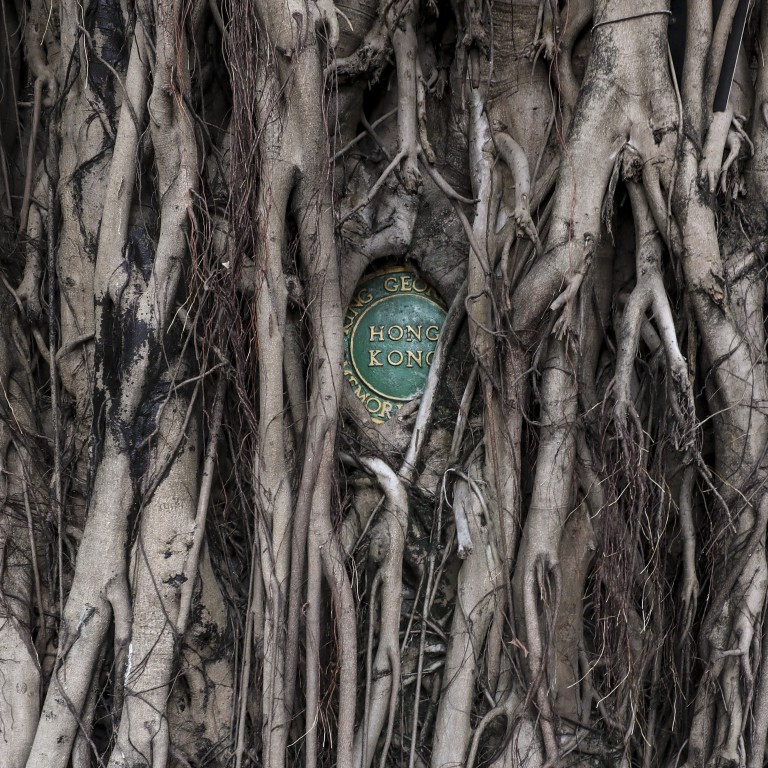
What you may not know about Hong Kong’s neighbourhood of contradiction, Sai Ying Pun
- ‘Sai Ying Pun is full of history and contrasts – new and old, life and death, Chinese and Western’
- Social worker Sunny Lau’s new tour showcases the quirks, wonders of the locale as part of a new project bringing local stories to life
Sunny Lau Chak-chun leads a self-designed community tour of Sai Ying Pun, encapsulating more than 100 years of the Hong Kong neighbourhood’s history within an area of 300 metres.
“Sai Ying Pun is a place that is full of history and contrasts, including new and old, life and death, and Chinese and Western,” says the 32-year-old social worker, who developed the tour with nine others through a community project called Hong Kong Faces and Places.
Located in western Hong Kong Island, Sai Ying Pun was a British military base in the 1880s, and the name of the locality means “west camp” in Cantonese.

Starting from Sai Ying Pun MTR station Exit A1, the tour takes in King George V Memorial Park and Fuk Tak Temple, with old shops mostly selling dried seafood and traditional Chinese medicine scattered along the zigzagging route.
Lau stops at a jewellery store on Queen’s Road West, a few minutes’ walk from the railway station.
An old but eye-catching hoarding hangs above indicating the site was occupied by a second-hand clothes shop in the 1940s, when such stores were popular with the underprivileged, who could only afford used suits and other clothing cast-offs donated by the rich.
Following decades of development, the old neighbourhood has been transformed, with an influx of modern restaurants, cafes and bars, standing in stark contrast to its enduring historic aura, Lau says, leading along a route marked by both dilapidated tenement buildings and high-rise towers.

Lau is among the Hongkongers uncovering community stories and giving them a wider audience under a project sponsored by the Robert H. N. Ho Family Foundation and organised by the non-profit initiative Urban Diary.
The project, which started last August and will end this September, provides classes of ecocriticism, community tour design, urban ecology and others to about 30 participants to encourage them to discover and write community stories.
Hedy Chu Chun-wing, programme coordinator of the project, says it is aimed at helping and encouraging people to tell Hong Kong’s local stories from a new and unique perspective, adding to existing mainstream narratives.
“The patterns of community stories nowadays are similar, mostly focusing on architecture or residents’ lives. But we want to add more perspectives for people to look at and appreciate our communities,” she says.
Three first-time restaurant owners who opened during the pandemic
Not far away from the jewellery store, Lau points to shops selling paper offerings that in the Chinese tradition are burned in memory of ancestors and those who passed away more recently.
He says there used to be a number of coffin shops as well, but they gradually moved out.
Just around the corner from the Bird Bridge, its name drawn from flocks historically resting on the crossing at sunset, stands the Sai Ying Pun Jockey Club Polyclinic, completed in 1960.
“This old district has borne witness to countless lives and deaths,” Lau says.

After the hospital, Lau pushes on to Hospital Road, where lies King George V Memorial Park. Built in 1936, it is one of the few parks in Hong Kong showcasing the city’s colonial past.
Lau says apart from its rich history, they included the park in their tour because of its vitality and popularity with today’s neighbourhood residents.
He adds the park boasts stone wall trees, which owe their existence to an old practice of growing banyan trees from openings in masonry stone retaining walls in place to prevent landslides.
Before leaving the park, Lau points to the Sai Ying Pun Community Complex on the High Street, a nine-storey building now home to several charities.

The site was built in 1892 and originally used to provide accommodation for European nurses working in the Government Civil Hospital, in the days before it was transformed into a facility for mentally ill patients.
Its association with mental illness and rumours that the Japanese used the premises as an execution hall during World War II led to tales spreading of ghostly sightings after it was abandoned in the 1970s, giving rise to the name High Street Ghost House.
“High Street Ghost House is what many people come to know about Sai Ying Pun,” Lau says.
Lau says apart from focusing on heritage and architecture in a similar vein to other popular tours, he tries to appreciate the community from different perspectives in his tour.
“Everyone has his or her unique perspective when looking at a community,” he says. “We are trying to include more perspectives, not only some popular spots with tourists, but also everyday places appreciated by local residents.”

